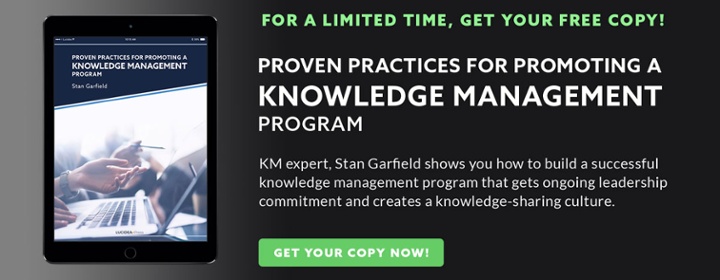
In my current book on promoting knowledge management initiatives within the corporate world, I warn against focusing too much on technology, which is a very common problem. But you will ultimately need to use technology for your KM program, so it’s important to understand it and use it in the optimal way. A critical component of successful technology procurement and rollout is a thorough understanding of how technology products are reviewed and approved.
If you need to acquire new products or add-ons to existing ones as part of your program, you must understand your organization’s procurement process. Part of this process is vendor evaluation and selection.
Below are examples of the questions that will be asked by the various stakeholders. You should be prepared to help answer these questions, possibly with the help of an outside analyst or consultant.
Business Unit
- What does the product do?
- How does it work?
- How is the product packaged and sold?
- How well does the product meet the business needs?
- What alternatives have been considered?
- How does purchasing the product compare to the alternatives?
- What is the business justification for this product?
Vendor
- What is the history of the product and the vendor?
- What is the corporate structure of the vendor?
- What support is provided as part of the contract?
- What additional support and services are available?
- What is the schedule of product updates and new releases?
- How is customer feedback solicited and incorporated into the product?
- Is there a customer advisory board, and if so, what are the details?
- What is the process for enhancing the product and communicating changes?
- What references can the vendor provide, and what do those references say about the product?
Procurement
- Why should this product be purchased?
- Is there an existing purchasing agreement with the vendor?
- What is the previous experience with the vendor?
- What are the initial and recurring costs of purchasing the product?
- What are the costs of support and consulting?
- What discounts and allowances are available?
- What alternatives are available?
- How does the product compare to the alternatives?
Legal
- What are the terms and conditions for this product?
- How is the software licensed?
- Is there an existing contract with the vendor?
- What is the proposed contract?
- What provisions are made for obtaining the source code if the company fails or is sold?
- What are the details of the data rights?
Information Security
- How is access to the product secured?
- How is access to the data secured?
- Where do the software and data reside?
- How are cross-border data flow and security handled?
- How is Personally Identifiable Information (PII) handled?
Technical
- What percentage of desired functionality comes in the off-the-shelf product, through purchased add-ons, and through custom modifications?
- Can our IT department make custom modifications?
- Does the vendor offer assistance with implementation and making custom modifications?
- How does the product scale?
- What are the performance details of the product?
- How positive is the user experience when using the product?
- With which tools is the product already integrated, and what are the details of all such integrations?
- What mechanisms are available for integration with additional tools?
- What is the compatibility of this product with existing platforms in use in the organization?
- On which other platforms does the product operate, and what are the details of migrating between platforms?
- What effort has been required in the past to migrate from older versions of the product to new ones?
- Does the product run in the cloud, on our premises behind the firewall, either one, or a hybrid combination of both?
When you have helped answer these questions, take steps to see that the following conditions are true. This will help ensure you get purchase approval.
- ✓ The product is a close match to the business needs.
- ✓ The product is clearly superior to the alternatives.
- ✓ There is a strong business justification for purchasing the product.
- ✓ The vendor is sound, and offers all required services and support.
- ✓ The references for the vendor and product are strong.
- ✓ The costs and terms and conditions are reasonable.
- ✓ Legal and information security concerns have been addressed appropriately.
- ✓ The product meets all technical requirements and expectations.
- ✓ The product integrates with current and planned platforms and tools.
- ✓ The product is easy to use and offers a great user experience.
Lucidea Press has published my latest book, Proven Practices for Promoting a Knowledge Management Program. The above post is an excerpt from Chapter 8: “Embrace Technology Appropriately.” I hope you find it relevant, and that you can benefit from the advice and insights drawn from my career as a KM practitioner.



